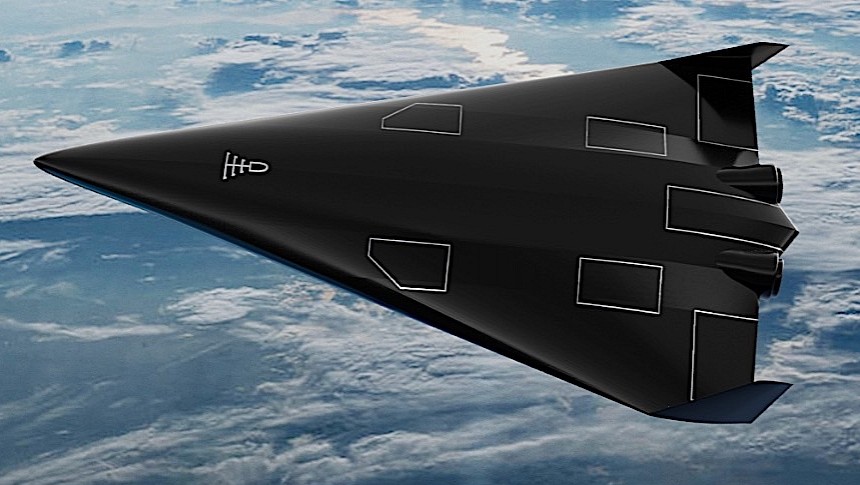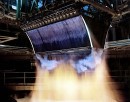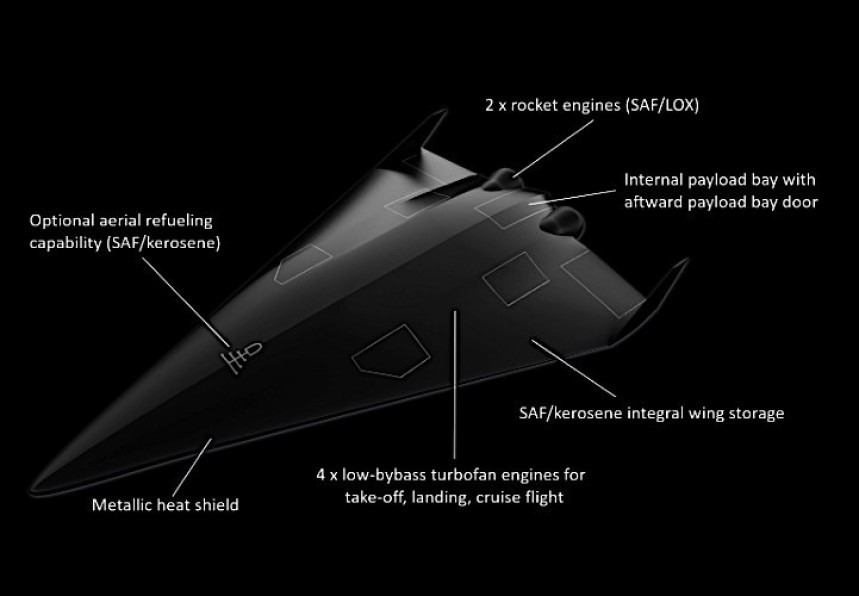If you take a really close look at the present-day aerospace industry, you'd be amazed to learn how many companies, old and new, are working on incredible projects that may forever change our world. Some of them are just getting started, while others are already in an advanced study or testing phase, and they cover everything from new aircraft engines to revolutionary spaceship designs.
One of the newer companies in this business is called Polaris Raumflugzeuge. It has nothing to do with the American owner of Indian Motorcycles, but was set up back in 2018 in Germany with the goal of "developing a revolutionary reusable space launch and hypersonic transport system that operates like an aircraft."
The company quickly caught the attention of Europe's aerospace tech consumers, including the continent's space agency (ESA). That was possible on account of a spaceplane called Aurora, which is supposed to aid with the launch of satellites, space science, but also act as a ride for tourists looking for trips to space.
The Aurora will be the subject of another extensive story here on autoevolution in the weeks to come. This time, however, we'll be focusing on an announcement made by Polaris this week that may mark the beginning of something truly extraordinary for the aersopace industry: the first in-flight use of a linear aerospike rocket engine.
LAS for short, the technology takes a different approach when it comes to how it shoots out the exhaust in order to generate thrust. In a normal rocket engine, the exhaust shoots out through a small opening placed in the middle of the engine bell. LAS however pushes the exhaust out through the edges of a wedge-shaped spike that replaces the bell.
In theory, this design has a number of advantages, including providing a higher level of propulsion than in traditional engines. In fact, as per the German company, not just a higher level of propulsion, but also "major efficiency increases compared to conventional rocket engines."
It's important to note that it is not Polaris that first came up with the idea. The aerospike has been around in one form or another for decades now, and was even considered by NASA as a potential source of propulsion for what was considered the successor of the space shuttle. That would be the Lockheed Martin VentureStar single-stage-to-orbit spaceplane.
With this project, the American space agency even reached a stage when it started ground testing aerospike engines, but as the VentureStar got canceled, interest in the tech died down. The idea did resurface a bit when NASA installed and even flew a cold demonstrator on an SR-71 Blackbird, but nothing came of that either.
The LAS engine is suitable for use in both space and hypersonic vehicles, but Polaris says it's ideal for the flat-shaped spaceplane it is working on. That's thanks to the engine's unique geometry, which allows a simpler integration than traditional designs, but also the reduced aerodynamic drag it offers during re-entry and glide back to Earth.
As far as capabilities are concerned, the aerospike could allow a spaceplane to carry a higher payload mass, while at the same time making the plane itself lighter. The maximum supersonic speed should be higher, and so should the plane's top altitude and range.
Those are few of the reasons why Polaris chose to go down this road with its spaceplane design, and aims to become the first one in the world to fly a hot LAS. And the company got a very important boost this week after the German military awarded it a contract to "study the potential of a linear aerospike (LAS) rocket engine as propulsion element in a spaceplane demonstrator."
The contract comes through the Federal Office of Bundeswehr Equipment, Information Technology and In-Service Support (BAAINBw), and its value was not disclosed. We do know the deal requires Polaris to ignite and test the engine in flight, on a demonstrator that's yet to be built.
The company is confident it is up to the task thanks to the technological advancements made in the years since NASA first tested the idea. More precisely, 3D printing should allow new cooling concepts to be integrated into the design, given how cooling proved to be a major issue during previous trials.
The demonstrator Polaris will build for the test will not be a full-blown Aurora, but a scaled-down version. It will however be larger and heavier than what the company has done before.
At this point, the exact details on the demonstrator the engine itself are not known. We also don't know when we are to expect the first test flight, but Polaris says it will be "a major milestone on the roadmap towards an operational spaceplane."
We'll keep an eye out for developments and update as soon as something new happens.
The company quickly caught the attention of Europe's aerospace tech consumers, including the continent's space agency (ESA). That was possible on account of a spaceplane called Aurora, which is supposed to aid with the launch of satellites, space science, but also act as a ride for tourists looking for trips to space.
The Aurora will be the subject of another extensive story here on autoevolution in the weeks to come. This time, however, we'll be focusing on an announcement made by Polaris this week that may mark the beginning of something truly extraordinary for the aersopace industry: the first in-flight use of a linear aerospike rocket engine.
LAS for short, the technology takes a different approach when it comes to how it shoots out the exhaust in order to generate thrust. In a normal rocket engine, the exhaust shoots out through a small opening placed in the middle of the engine bell. LAS however pushes the exhaust out through the edges of a wedge-shaped spike that replaces the bell.
In theory, this design has a number of advantages, including providing a higher level of propulsion than in traditional engines. In fact, as per the German company, not just a higher level of propulsion, but also "major efficiency increases compared to conventional rocket engines."
With this project, the American space agency even reached a stage when it started ground testing aerospike engines, but as the VentureStar got canceled, interest in the tech died down. The idea did resurface a bit when NASA installed and even flew a cold demonstrator on an SR-71 Blackbird, but nothing came of that either.
The LAS engine is suitable for use in both space and hypersonic vehicles, but Polaris says it's ideal for the flat-shaped spaceplane it is working on. That's thanks to the engine's unique geometry, which allows a simpler integration than traditional designs, but also the reduced aerodynamic drag it offers during re-entry and glide back to Earth.
As far as capabilities are concerned, the aerospike could allow a spaceplane to carry a higher payload mass, while at the same time making the plane itself lighter. The maximum supersonic speed should be higher, and so should the plane's top altitude and range.
Those are few of the reasons why Polaris chose to go down this road with its spaceplane design, and aims to become the first one in the world to fly a hot LAS. And the company got a very important boost this week after the German military awarded it a contract to "study the potential of a linear aerospike (LAS) rocket engine as propulsion element in a spaceplane demonstrator."
The company is confident it is up to the task thanks to the technological advancements made in the years since NASA first tested the idea. More precisely, 3D printing should allow new cooling concepts to be integrated into the design, given how cooling proved to be a major issue during previous trials.
The demonstrator Polaris will build for the test will not be a full-blown Aurora, but a scaled-down version. It will however be larger and heavier than what the company has done before.
At this point, the exact details on the demonstrator the engine itself are not known. We also don't know when we are to expect the first test flight, but Polaris says it will be "a major milestone on the roadmap towards an operational spaceplane."
We'll keep an eye out for developments and update as soon as something new happens.











